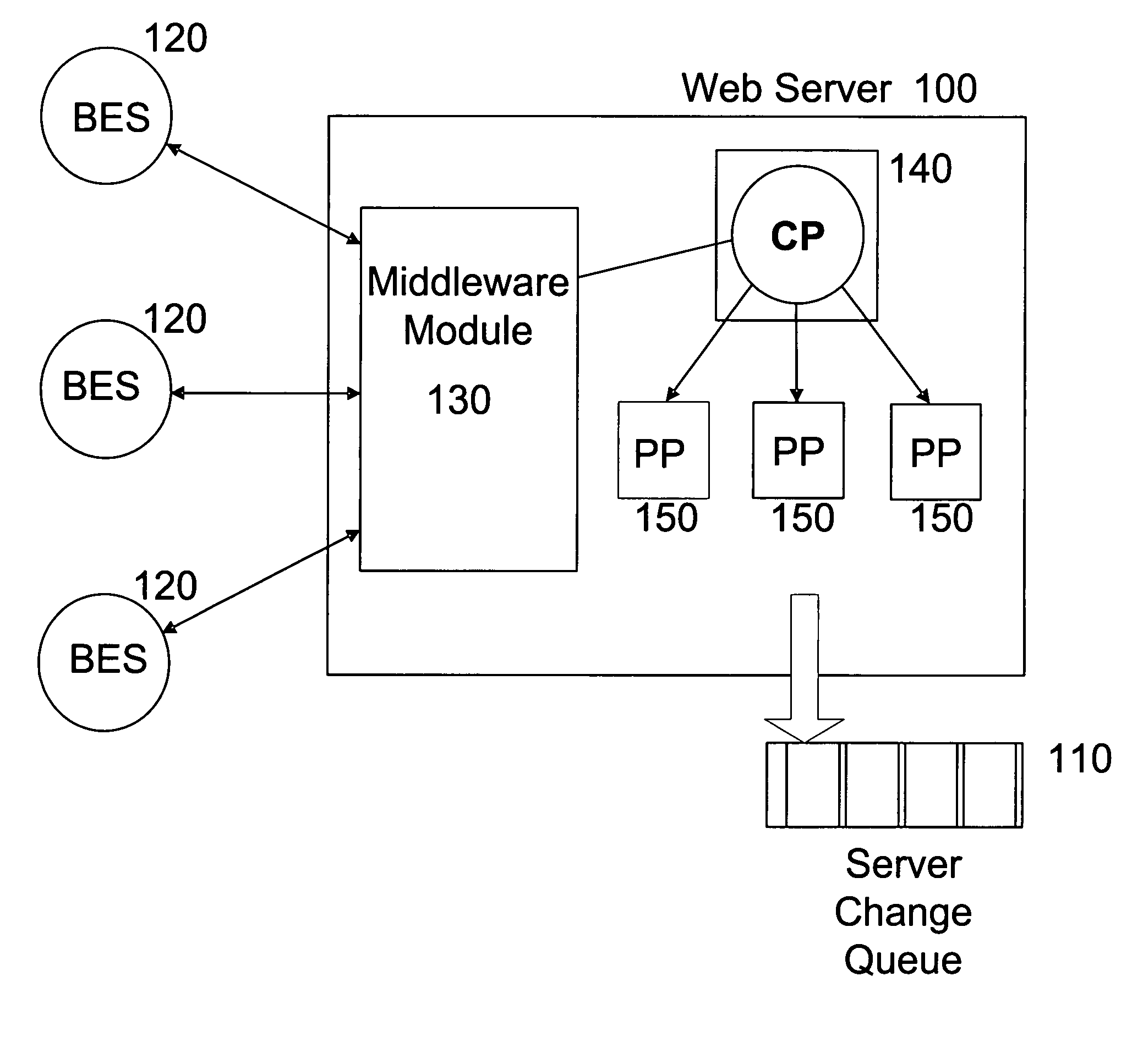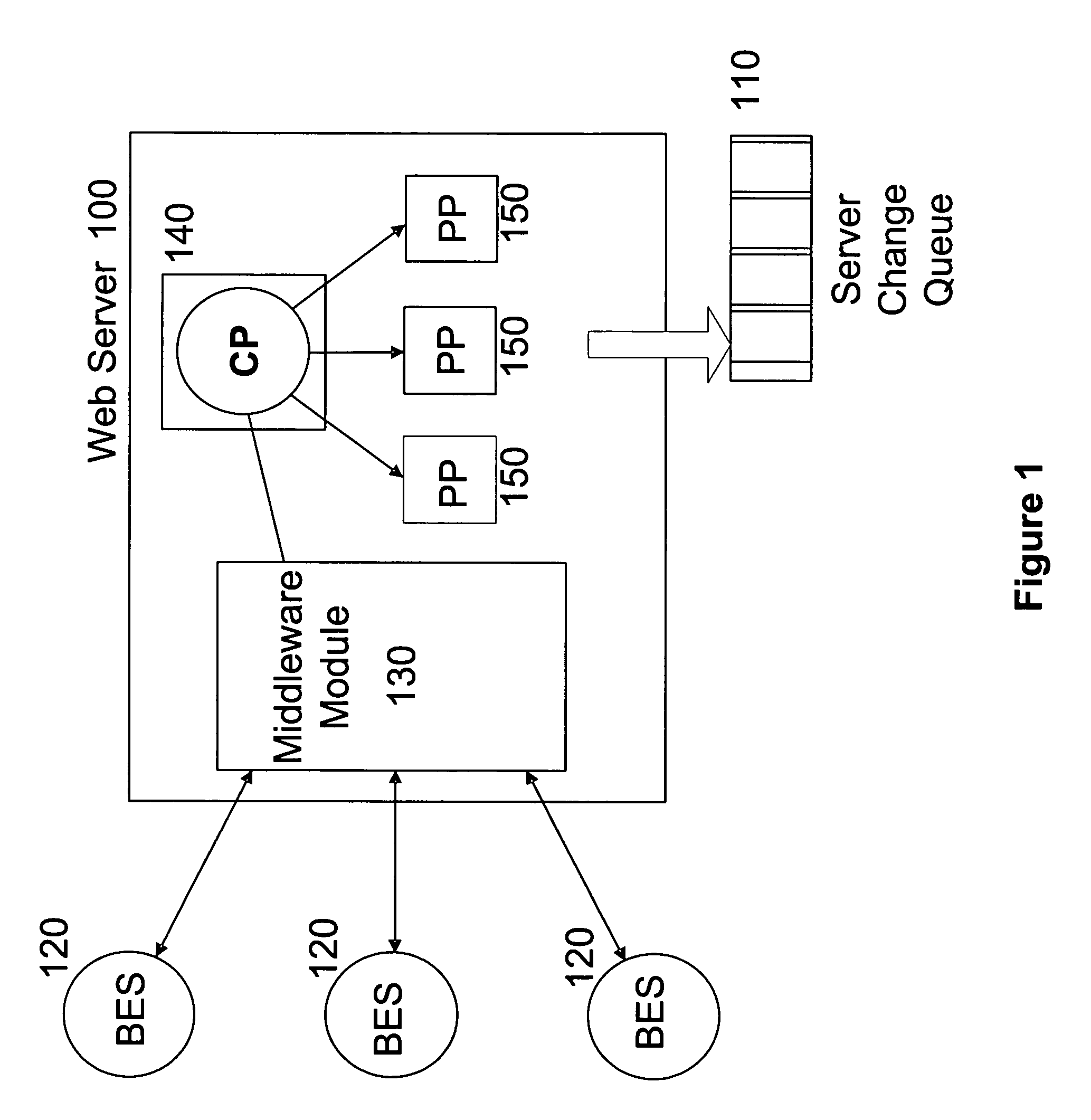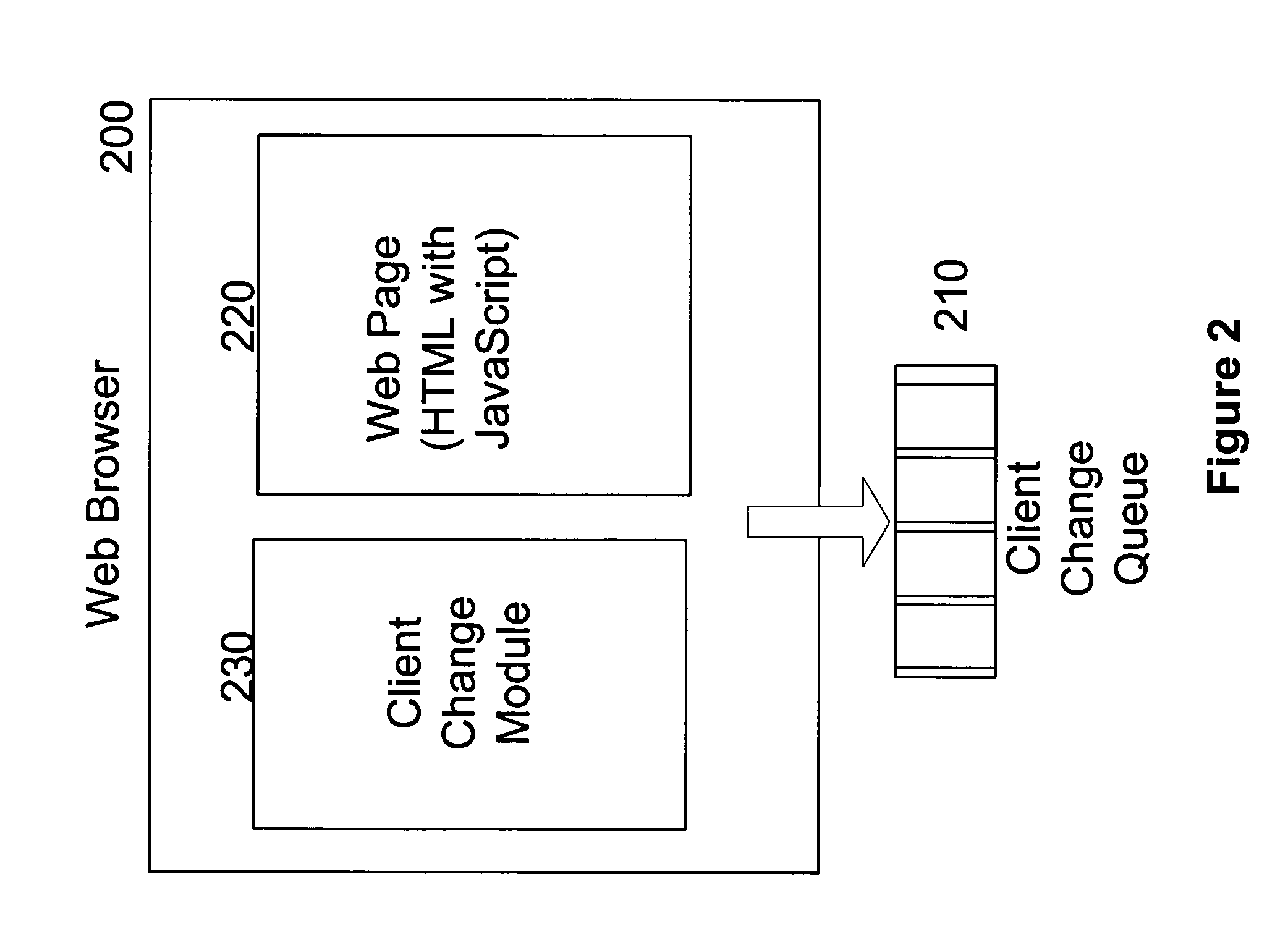[0018] The present invention is a method and apparatus for partial updating of client interfaces. Embodiments of the invention may be applied to any client-
server system having a server configured to serve container structures having multiple interface elements, and a client execution context configured to process such container structures in support of an interface.
Dynamic interface behavior is provided by updating interface elements as needed, without requiring that entire container structures be refreshed.
[0021] As an example implementation of the invention, one or more embodiments may provide a method and apparatus for updating individual portions of a
Web page both on a browser-client and on a
Web server. In this implementation, the client interface context is implemented by a
Web browser or browser-client, and the server is a
Web server providing interface containers in the form of Web pages containing interface elements such as
HTML tags. The browser-client may update the corresponding server-side through a
middleware “engine.” Likewise, the server may update the corresponding browser-client through the same
middleware engine. Input triggers may cause change requests to be queued. Programmatically defined events trigger
processing of the
change request queue on the client, which may result in partial updating of a Web page.
Processing may occur on the server, where
resultant client update requests are likewise queued. Alternative programmatically defined events may trigger the return of the server change queue to the client. Only those portions of the Web page affected by changes in the queue are updated. This partial page updating replaces the need for entire Web page refreshing, thus affording a
Web application of the present invention a more desktop-like
look and feel.
[0022] The flexible middleware “machinery” of the invention may track and communicate changes in state between a client and server in a
Web application using the present invention. The invention encompasses a “middleware engine” that can track state changes across “stateless” protocols such as HTTP. Such a state tracking method may be comprised of a
system of programmatic rules that determine when and how partial Web page changes occur and are communicated between the server and client. The present invention does not require the use of “
hard coding” to update a given portion of the page, instead allows a
general purpose method to achieve, for example,
Document Object Model (DOM) manipulation. In one embodiment of the present invention a
Web application may communicate with a
Web server through a binary interface, and may update information based on
Uniform Resource Locator (URL) links that can be particularized to the “subtag” level of individual
HTML tags. The present invention is flexible such that the
Middleware method of the present invention employed may accommodate both stateless and “stateful” connections. Embodiments of the present invention can be used in conjunction with existing technologies such as Active
Server Page (ASP) and
Java Server Page (JSP) for server-side Web page creation without the need to modify such technologies. Embodiments of the present invention need not create a monolithic Web page, as those embodiments can support a Web page composed of multiple discrete Web pages, each capable of being updated independent of the containing Web page.
[0023] Embodiments of the present invention may further support “page proxies” that may be used to create an abstraction of the Web pages that appear on the client. This feature allows greater flexibility in creating and updating Web pages dynamically at runtime. One embodiment of the invention, for example, pre-parses the code for the Web pages on the server at the page proxy level. The present invention allows a single client to programmatically update state across multiple Web pages. Because each client connecting to the server may have a single change queue, the change queue spans multiple Web pages. In other words, an application using the present invention may act as an instantiated server shell.
[0024] The method of the present invention works equally well with both asynchronous and synchronous server models. In a purely asynchronous model the middleware “engine” may be driven through user interactivity. Alternatively, in a synchronous model (for example, where you have a data streaming socket connection), a middleware engine of the present invention may utilize a trigger-based mechanism at the socket layer. Embodiments of the present invention may provide the ability to control update times and also allow for asynchronous updates, even in “multiple-select” operations. The present invention further enables dynamic runtime replacement or updating of
HTML hyperlink references, sometimes called tags.
 Login to View More
Login to View More  Login to View More
Login to View More 


